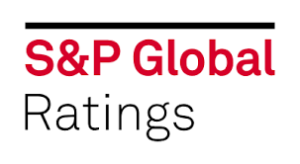
Ukraine’s economic growth will continue in 2024 on the back of expanding domestic demand and a further recovery in seaborne exports, but it will fall to 3.9% from around 5.5% last year due to the high base effect created by the past strong agricultural season, international rating agency S&P Global Ratings forecast.
“Absent a significant escalation of the war, we forecast Ukraine’s economy to grow by about 4-5% on average over the medium term, but a recovery to pre-war levels is unlikely in the foreseeable future,” it said in its release on Saturday night as it downgraded Ukraine’s long-term foreign currency rating to ‘CC’ from ‘CCC’ with a negative outlook amid an expected Eurobond restructuring.
S&P estimates that average annual inflation will fall to around 7% this year from 12.8% last year, but it will pick up in the second half of this year amid weakening base effect, recovering domestic demand and moderate currency depreciation.
The agency expects the hryvnia to depreciate to 41.02 UAH/$1 at the end of this year and to 43.89/$1 at the end of next year.
S&P emphasizes that the development of the war with Russia continues to shape Ukraine’s macroeconomic outlook. It is unclear how the war may evolve, but we believe a military stalemate without any major changes on the front lines remains the most likely scenario as both sides resign themselves to a protracted war. The prospect of any negotiated peace plan seems unlikely. As a result, we assume that the active phase of the war will last until the end of this year, and most likely beyond,” the document says.
The agency recalls that Russian troops have occupied about 15% of Ukraine’s territory, which accounts for about 8-9% of its pre-war GDP, 14% of industrial and 10% of agricultural production. Almost a third of Ukraine’s population has been displaced and about 15% have fled the country and are now refugees living mainly in the EU.
Nevertheless, according to S&P’s baseline scenario, the Ukrainian government and the NBU will maintain their administrative capacity even in the face of serious military attacks.
Given the significant damage to physical and human capital, Ukraine’s medium-term economic prospects are subject to a high degree of uncertainty, the agency notes. In its view, the key factors determining the country’s recovery prospects are the evolution of the war, post-war demographics and labor market profile, as well as the effectiveness of reconstruction efforts and continued international support.
S&P notes a high degree of uncertainty about the scope, outcome and consequences of the Russia-Ukraine war. In its view, regardless of the duration of hostilities, the associated risks are likely to persist for some time.
As reported, the National Bank of Ukraine in January estimated the country’s GDP growth in 2023 at 5.7% and maintained its 2024 growth forecast at 3.6%, slightly worsening it for 2025 – from 6.0% to 5.8%.
The government, when approving the draft state budget for the second reading in early November 2023, improved last year’s GDP growth estimate from 2.8% to 5%, but worsened it for 2024 from 5% to 4.6%.